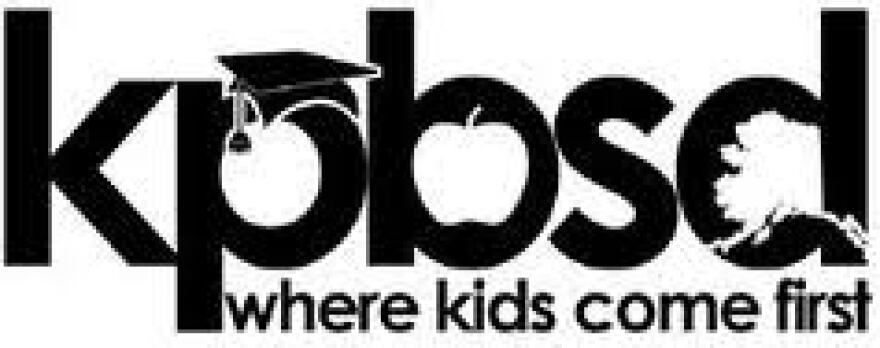The Kenai Peninsula Borough School District expects $3 million or more in cuts to its budget next year and administrators are turning to the public for ideas on how to cope.
According to KDLL Public Radio Reporter Jenny Neyman the Kenai Peninsula Borough School District is facing some difficult budget decisions for next fiscal year and needs your help to make them.
Twenty-two schools across the district hosted budget meetings Thursday evening, to share information about the district’s financial situation and request input on what should be done to cover the more than-$3 million shortfall expected in next year’s budget.
“We want as much input as we can get so that we can make good decisions for our kids,” said Dusek.
That’s Superintendent Sean Dusek. He and Dave Jones, assistant superintendent of Instructional Support, gave on overview of the district’s expenditures and revenues, and how the former is outpacing the latter. The district gets the majority — about 64 percent — of its general fund operating money from the state. That amount was cut last year and looks like it will at least remain decreased this year, if not be cut further.
“We know, based upon what’s coming out of Juneau from the governor, the Legislature, that the fiscal climate is actually getting worse. We are anticipating some additional reductions from the state. … We hope not, but the situation is not good from Juneau,” said Dusek.
The Kenai Peninsula Borough contributes about 35 percent, which equated to about $48 million in this year’s budget. About 36 percent of the borough’s contribution is from property taxes, and 64 percent, from sales taxes.
“So that’s why in the summer when I go to the grocery store and have to stand in line behind a bunch of tourists and a bunch of dip-netters from Anchorage, I just smile and say, ‘Hey, thanks for coming.’ Because that’s where a lot of that money comes from, and I appreciate that,” said Jones.
Where does that money go? Most of it, 81 percent, is spent on salary and benefits — in other words, teachers, administrators, support staff and other personnel. The remaining 19 percent covers everything else — utilities, travel, supplies, technology, curriculum materials, and so on.
That’s the first area of the budget to be looked at when reductions need to be made, but can only be cut so much.
“When we look at utilities, it’s really not easy to say that, ‘Well, everybody’s going to cut their budget 10 percent,’ because we really can’t say, ‘OK, we’re not going to heat on Fridays,’” said Jones.
When big numbers need to be achieved, they have to come from the 81 percent of the budget that covers personnel. The district’s challenge is how to make those cuts in a way that impacts students the least.
The district cut $1.2 million from its budget two years ago, including 10.5 full-time equivalent positions, and another $1.4 million last year, with 9.5 positions being cut. Last year, the school board decided to cover a $3.4 million gap by dipping into its general fund balance. But there isn’t enough cushion in this reserve account to keep plugging holes of this size, especially if the governor and Legislature decide to cut education further this year.
“The board’s made a decision that we aren’t going to use all of our fund balance all at once, so we’ve done a combination of reductions in our budget and also the use of fund balance,” said Dusek.
That’s where the public comes in. Thursday’s presentation was an early step in the district’s budget process. The school board would like input from the public on where and how it should cut to address whatever the shortfall ends up being when the Legislature is said and done.
“And that’s what the task is tonight, is to ask the questions, to offer input on prioritizing on what our expenditures should be,” said Dusek.
The district wants the public to speak up to legislators, as well, in support of education funding.
“People need to step up and talk to the legislators, talk to the assembly and talk to other community members. We believe that Alaska’s children should be the number-one priority. We believe that this district is a good investment. We believe public education, in general, is a good investment of public dollars,” said Dusek.
Parents and community members can submit their ideas to their school’s site councils. That information will be compiled and provided to the school board.



